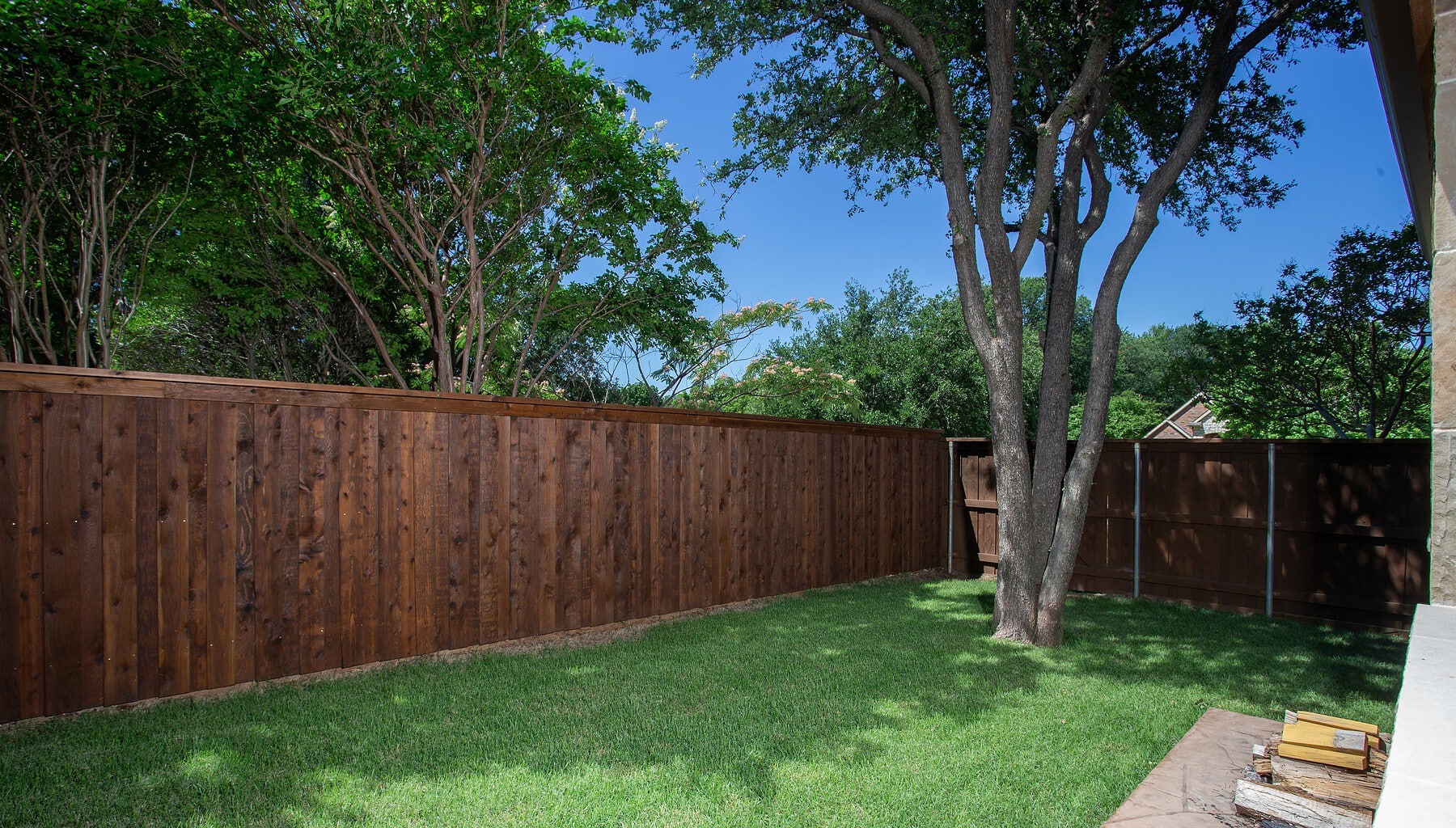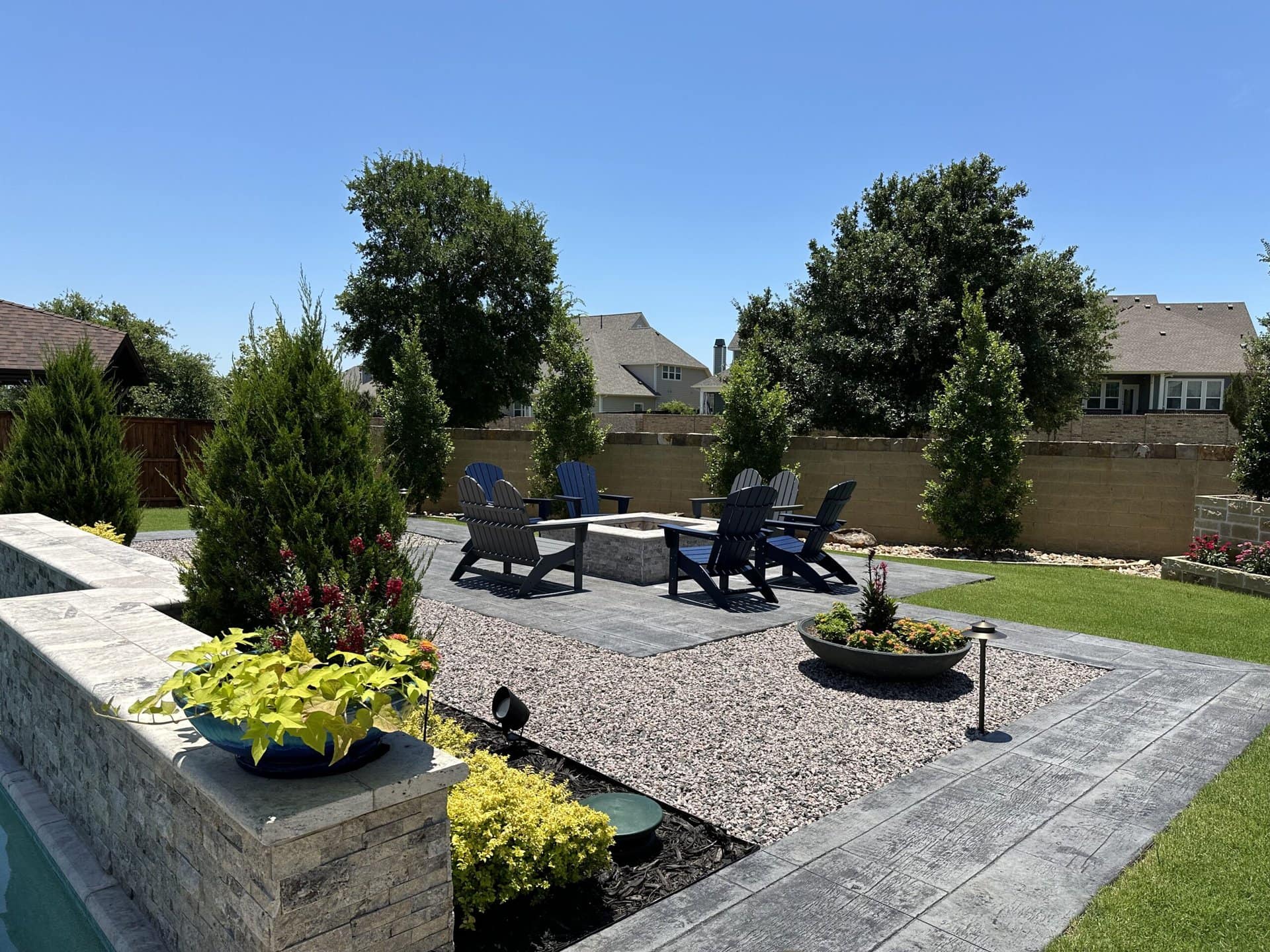How to Maintain a Wood Fence
The high heat and humidity of the summer months in Texas can definitely take their toll on any hardscape feature, especially maintaining a wood fence. But this is especially true when it comes to your wood fences. Being proactive with fence maintenance before winter arrives can preserve your investment and extend its life.
Not only will the results be more aesthetically appealing, but you will also drastically extend the life of your fence. Learn more about how to maintain a wood fence this fall so it can stay protected and look beautiful all winter long.
Table of Contents
Give Your Fence a Thorough Cleaning

Mother Nature throws an amazing amount of dirt, grime, and other debris at your fence – most of which will stick to it. When initially addressing how to maintain a wood fence, removing this layer of dirt is the first place to start. A professional power washer may not leave it looking new, but it will definitely improve its overall appearance. In addition, a thorough cleaning gives you a fresh base to work with and is necessary to complete any other fence maintenance effectively.
Tip: Power washing is a relatively inexpensive procedure but should be done by a reputable company for the best results.
Repair Any Damage, No Matter How Minor

When it comes to outdoor features, freezing temperatures and the frost/defrost cycle usually tend to do the most damage. This makes it essential to repair even the smallest damage to your fence before the colder temperatures move in. If your wood fence is not repaired and properly protected, water can infiltrate the damaged areas, freeze when the temperatures drop, and then pry apart even the strongest joints. A little fence maintenance and care now can save a lot of aggravation and money when Spring rolls around next year.
Tip: Always use a licensed and bonded contractor for fence repairs.
Clear Debris
Proper fence maintenance includes removing any grass or weeds growing around the bottom of your fence. When they’re too close to your fence, grass, weeds, and other plants create a dark, moist environment that can lead to mold growth and wood rot. Remove or cut any loose or low-hanging tree limbs that touch or are close to touching your fence. This ensures they don’t rub up against the fence or cause damage during a severe storm.
Tip: Use a weed-eater to remove weeds and grass around the bottom of the fence that the lawnmower can’t reach.
Learn More: Cut Your Grass Without Damaging Your Fence
Check for Signs of Weathering and Rotting

Once the fence is cleaned thoroughly, and the debris is cleared, inspect your fence for any signs of weathering. Look for areas where the sealant has been removed and the paint or finish peels from extended UV exposure. Then, check for signs of rotting or damage from termites or other insects. Inspect fence posts and panels to ensure they are stable.
Learn More: Keep Pests Out of Your Yard with Fence Maintenance
Tip: Grab each post from the top and apply pressure to all sides to check posts for stability. A secure post won’t move under pressure. If it does move, it should be repaired or replaced as soon as possible.
Re-stain for Added Protection
The final step in the fall fence maintenance process is re-staining your fence. While this step may seem to perform a purely aesthetic function, nothing could be further from the truth. The staining process not only makes the fence more visually pleasing but also helps to increase its long-term durability. The latest high-tech stains incorporate compounds that color the wood and protect it from UV light, water, and insects, as well as fungal growth.

Tip: Re-staining is arduous and must be done properly and thoroughly to be most effective. Many homeowners are tempted to do this job independently, but it is far better to pay a professional company to do the job for you.
Knowing how to maintain a wood fence now could save you a lot of time and money later. Don’t let the winter weather wreak havoc on your investment. Make sure your fence is ready!
Recent Posts
Categories
Request an Estimate Today
and their uses, you can create a concept that works for your
family. Keep in mind the purpose of the structure, whether natural
light in your home is a factor, and where you want the focal point
of your backyard to be. Once your gears get turning, reach out to
request an estimate on your concept.





